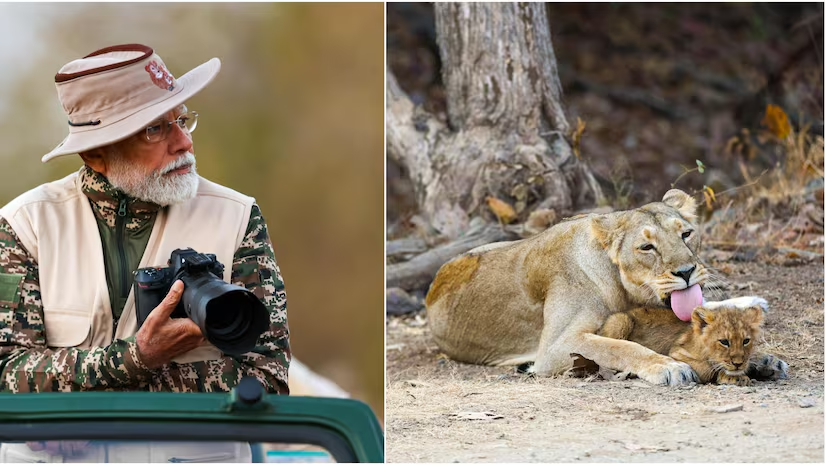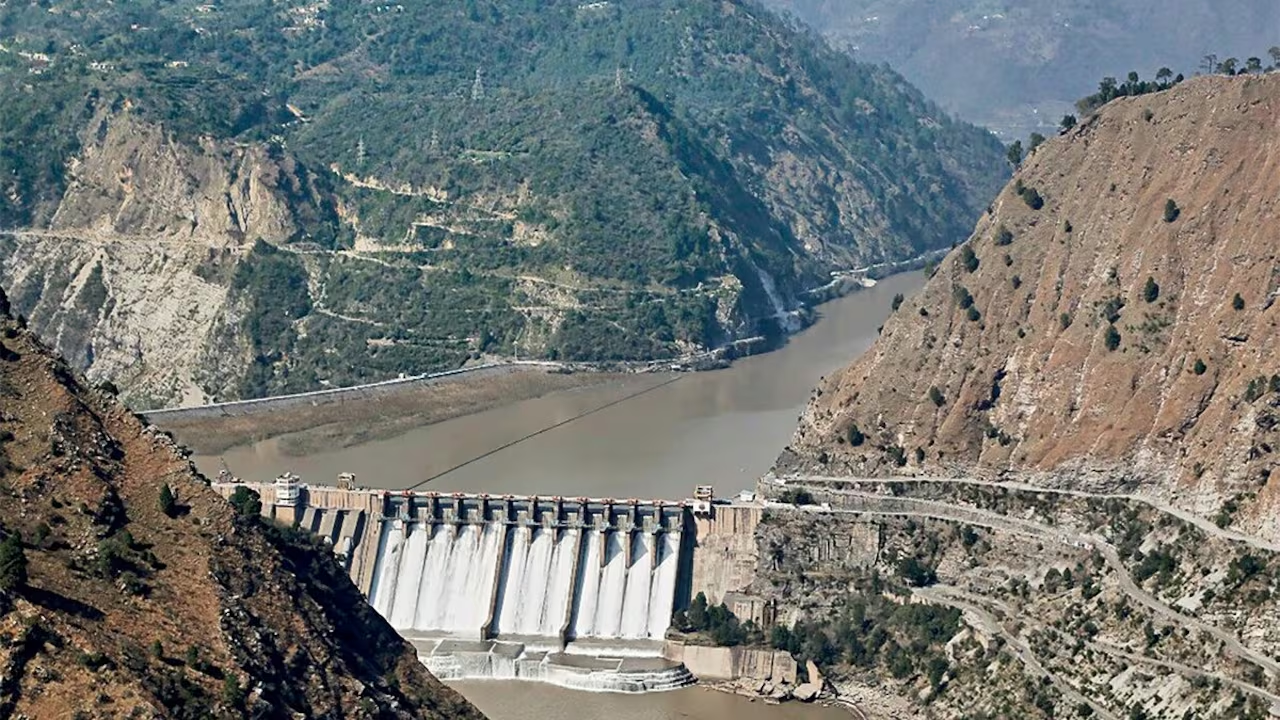- Courses
- GS Full Course 1 Year
- GS Full Course 2 Year
- GS Full Course 3 Year
- GS Full Course Till Selection
- Answer Alpha: Mains 2025 Mentorship
- MEP (Mains Enrichment Programme) Data, Facts
- Essay Target – 150+ Marks
- Online Program
- GS Recorded Course
- Polity
- Geography
- Economy
- Ancient, Medieval and Art & Culture AMAC
- Modern India, Post Independence & World History
- Environment
- Governance
- Science & Technology
- International Relations and Internal Security
- Disaster Management
- Ethics
- NCERT Current Affairs
- Indian Society and Social Issue
- NCERT- Science and Technology
- NCERT - Geography
- NCERT - Ancient History
- NCERT- World History
- NCERT Modern History
- CSAT
- 5 LAYERED ARJUNA Mentorship
- Public Administration Optional
- ABOUT US
- OUR TOPPERS
- TEST SERIES
- FREE STUDY MATERIAL
- VIDEOS
- CONTACT US
7th Meeting of National Board for Wildlife (NBWL)
7th Meeting of National Board for Wildlife (NBWL)
05-03-2025

- World Wildlife Day (3rd March 2025): This day is observed annually to raise awareness about the importance of wildlife and to highlight the need for wildlife conservation.
- The theme for 2025 is "Wildlife Conservation Finance: Investing in People and Planet."
- On this important day, Prime Minister Narendra Modi visited Gir National Park, located in Gujarat, and chaired the 7th meeting of the National Board for Wildlife (NBWL).
- This meeting focused on discussing and strengthening India’s wildlife conservation efforts.
Key Announcements on World Wildlife Day 2025:
- Riverine Dolphin Estimation Report:
- Focus: The report covers 28 rivers across 8 states and aims to assess the population of river dolphins, particularly focusing on the Ganges and Indus dolphins.
- National Referral Centre for Wildlife:
- The foundation stone for this centre was laid in Junagadh, Gujarat. This facility will focus on wildlife research, conservation, and rehabilitation of endangered species.
- AI and Machine Learning for Human-Wildlife Conflict Mitigation:
- The government is integrating Artificial Intelligence (AI) and Machine Learning (ML) to mitigate human-wildlife conflicts. These technologies will help to collect and analyze data to prevent wildlife-related accidents and human casualties.
- New Cheetah Reintroduction Sites:
- Gandhisagar Sanctuary (Madhya Pradesh) and Banni Grasslands (Gujarat) have been identified as new sites for the reintroduction of cheetahs, aiming to restore the species to its natural habitat after it became extinct in India in the 1950s.
- Gandhisagar Sanctuary (Madhya Pradesh) and Banni Grasslands (Gujarat) have been identified as new sites for the reintroduction of cheetahs, aiming to restore the species to its natural habitat after it became extinct in India in the 1950s.
Wildlife Conservation Efforts & Budget Allocations:
- Union Budget 2025-26:
- Ministry of Environment, Forest and Climate Change (MoEFCC) has been allocated ₹3,412.82 crores, a 9% increase from the previous year, for wildlife conservation and environmental protection activities.
- Protected Areas in India:
- India has a total of 1014 Protected Areas, which cover 5.32% of the country’s geographical area. These include:
- 106 National Parks
- 573 Wildlife Sanctuaries
- 115 Conservation Reserves
- 220 Community Reserves
- India has a total of 1014 Protected Areas, which cover 5.32% of the country’s geographical area. These include:
Species-Specific Conservation Initiatives:
1. Project Dolphin (Launched: 15th August 2020):
- Focus: Conservation of marine and riverine dolphins, with a special focus on the Ganges and Indus dolphins.
- Budget Allocations:
- 2022-23: ₹241.73 lakh
- 2023-24: ₹248.18 lakh
- Key Locations: Assam, Rajasthan, Madhya Pradesh, Punjab, and Lakshadweep.
- Milestone in 2024: India achieved the first-ever satellite tagging of the Ganges River Dolphin in Assam under this project.
2. Project Tiger (Launched: 1973):
- Global Share: India is home to over 70% of the world’s wild tigers.
- Tiger Population (2022): India has 3,682 tigers (ranging between 3,167–3,925).
- Tiger Reserves: India currently has 57 tiger reserves, covering 2.30% of the country’s geographical area. The Ratapani Tiger Reserve in Madhya Pradesh is the latest addition.
- International Collaboration: 23 tiger reserves have received CA|TS accreditation.
- Reintroduction of Tigers: Efforts are underway to reintroduce tigers in reserves like Rajaji Tiger Reserve (Uttarakhand), Madhav Tiger Reserve (Madhya Pradesh), Mukundra Hills Tiger Reserve (Rajasthan), and Ramgarh Vishdhari Tiger Reserve (Rajasthan).
3. Project Elephant (Launched: 1992):
- Elephant Population Growth: From 26,786 elephants in 2018, the number has risen to 29,964 in 2022.
- Elephant Reserves: There are 33 Elephant Reserves across 14 states.
- Integrated Wildlife Protection: Many Elephant Reserves overlap with Tiger Reserves, Wildlife Sanctuaries, and Reserved Forests.
4. Project Lion (Launched: 2020):
- Focus: The conservation of the Asiatic Lion in Gir National Park and surrounding areas.
- Population Growth: The lion population has increased from 411 in 2010 to 674 in 2020.
- International Recognition: The IUCN reclassified the Asiatic Lion from Critically Endangered to Endangered in 2008.
5. Project Cheetah (Launched: September 2022):
- Cheetah Reintroduction: In 2022, 8 cheetahs were translocated from Namibia to Kuno National Park (Madhya Pradesh). In 2023, 12 cheetahs were brought from South Africa.
- Births: A female cheetah gave birth to cubs in 2023, marking a significant step in the species' reintroduction.
- Milestone in 2024: As of January 2024, three cubs were born to the Namibian cheetah Aasha at Kuno National Park.
Important Policy & Governance Changes:
- Wildlife (Protection) Act, 1972 (Amendment, 2022):
- The amendment strengthened wildlife protection by empowering the Indian Coast Guard and recognizing the Gangetic and Indus River Dolphins as distinct species under Schedule I of the Act.
- International Big Cat Alliance (IBCA) (Launched: 2025):
- The alliance, launched in January 2025, aims to promote global big cat conservation with a focus on seven big cat species: Tiger, Lion, Leopard, Snow Leopard, Cheetah, Jaguar, and Puma.
- India is one of the founding members, and the headquarters of the IBCA is based in India.
Conservation of Other Iconic Species:
- Asiatic Lion Recovery: The Asiatic lion population has grown from 411 in 2010 to 674 in 2020. India is the only home to the Asiatic Lion, primarily in Gir National Park in Gujarat.
- Indian One-Horned Rhinoceros:
- Indian Rhino Vision (IRV) 2020: This initiative aims to increase the population of the Indian One-Horned Rhinoceros and expand their distribution.
- Kaziranga National Park: As of 2022, Kaziranga is home to 2,613 greater one-horned rhinos, which constitutes about 68% of the global population.
Ecosystem and Habitat Conservation:
- Mangrove Initiative for Shoreline Habitats & Tangible Incomes (MISHTI):
- This initiative aims to restore 22,561 hectares of mangrove forests across 13 states, focusing on strengthening coastal ecosystems.
- National Mission for Green India (GIM):
- Launched in 2014, the mission aims to increase India’s forest cover, restore degraded ecosystems, and increase the carbon sink to mitigate climate change.
- Integrated Development of Wildlife Habitats (IDWH):
- A scheme that provides financial and technical assistance to state and UT governments for wildlife conservation activities.
- A scheme that provides financial and technical assistance to state and UT governments for wildlife conservation activities.
Community Involvement and Awareness:
- 'Ek Ped Maa Ke Naam' Campaign: A tree plantation initiative that has led to the planting of 102 crore trees by December 2024. The goal is to reach 140 crore trees by March 2025.
- World Wildlife Day 2024: The day featured eco-trails and interactive sessions aimed at raising public awareness about wildlife conservation.
Marine Conservation:
- National Marine Turtle Action Plan: This plan focuses on the protection of marine turtles along India’s coastline.
- Coastal Regulation Zone (CRZ) Notification, 2019: The CRZ notification aims to protect India’s ecologically sensitive coastal areas from harmful development and human activities.
|
Key Conservation Initiatives:
|



